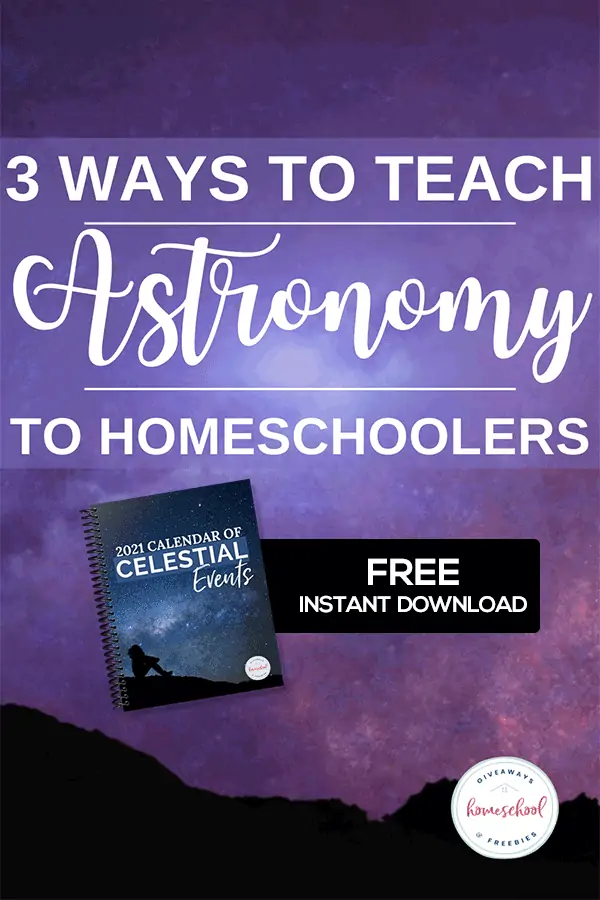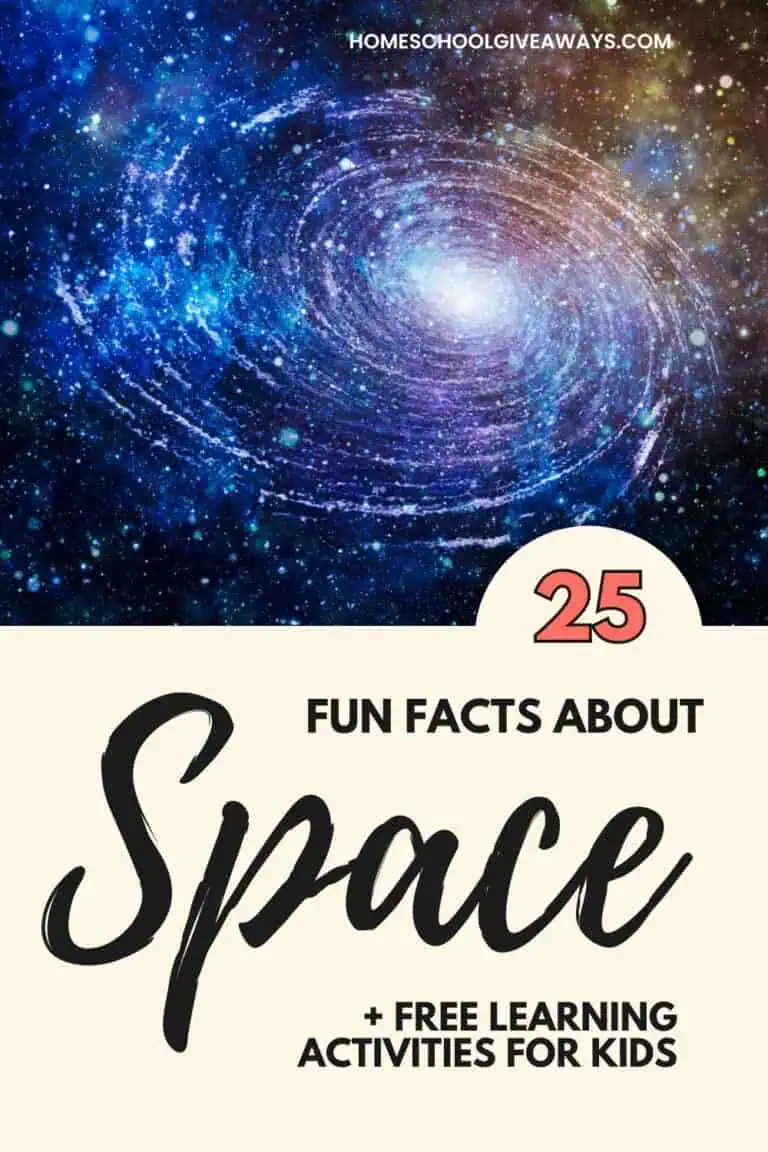3 Ways to Teach Astronomy to Homeschoolers
Published:
December 31, 2020

Contributor:
Carrie
Disclosure: This post may contain affiliate links, meaning if you decide to make a purchase via my links, I may earn a commission at no additional cost to you. See my disclosure for more info.
While some kids couldn’t care less about the vast space above us, there are some like my daughter who absolutely loves all things celestial. If you’re looking for innovative ways to teach this amazing subject, keep reading for 3 ways to teach astronomy to homeschoolers.

Astronomy can be one of those tricky subjects to teach. First, there’s the choice of teaching it from a secular or biblical worldview. Then there’s the question of how to make it fun and engaging.
How to Start Teaching Astronomy
As I mentioned before, it’s important to choose your worldview. You’ll be able to find resources to support whichever route you plan to take; however, if you’re looking for a great place to start with Christian-based resources, then Apologia, Master Books, and Answers to Genesis are some tried and true resources.
These companies do a great job at presenting both perspectives so children learn how to defend their position and beliefs. Once you’ve chosen your worldview, it’s time to look into resources to help bring this subject to life. You can also think outside the box when it comes to selecting resources.
Consider checking out books from your public library, planning a field trip to your local (or closest) science museum or planetarium, and adding some hands-on activities. With this in mind, here are three more in-depth ways to teach astronomy.
3 Ways to Teach Astronomy to Homeschoolers
Always keep your child’s age, grade, and developmental level in mind when teaching any subject, but especially astronomy. This is one area that can be built up or scaled down to accommodate any learning style. The overall goal is to have a fun learning time!
Use hands-on activities.
I don’t know many children who would opt out of using their hands to complete a lesson or activity. When it comes to teaching astronomy, there are lots of things you can do:
- Make a model solar system.
- Create a rocket launch.
- Build a comet or meteor shower.
- Draw, color, and/or paint pictures of the solar system.
- Make and play with a solar system sensory bin.
- Create a celestial notebooking journal.
Observe the sky.
Learning how to stargaze can make for some pretty interesting lessons. Looking at and studying the different phases of the moon are only the beginning. There are also several planets that are visible at certain times, such as: Mercury, Venus, Jupiter, Mars, and Saturn. These are best seen between March and June.
There are also lots of constellations that can be seen. From the Big Dipper to Orion and Leo, your kids will have a blast connecting the dots in the sky. With one quick Google search you can find a star map for your location so you’ll know specifically what to look for.
Read astronomy-related books.
Books always add a nice touch to any subject and/or unit study simply because you can find a book for just about everything. In the subject of astronomy, there’s no shortage of books.
Whether you’re teaching your 5-year-old about the planets or giving your high schooler a research assignment, here are some books to consider adding to your lesson plans:
- 50 Things To See With A Telescope – Kids: A Constellation Focused Approach
- Astronomy for Kids: How to Explore Outer Space with Binoculars, a Telescope, or Just Your Eyes!
- Constellations for Kids: An Easy Guide to Discovering the Stars
- National Geographic Readers: Night Sky
- My First Book of Planets: All About the Solar System for Kids
Final Thoughts
Teaching astronomy to your homeschoolers can be a fun and exciting time. Use the ideas above and the free 2021 Calendar of Celestial Events to start learning some amazing facts about the grand ole sky!
You Might Also Like…
FREE Instant Download
2021 Calendar of Celestial Events







